Best Electric Guitar Strings 2023 - 6 String Sets
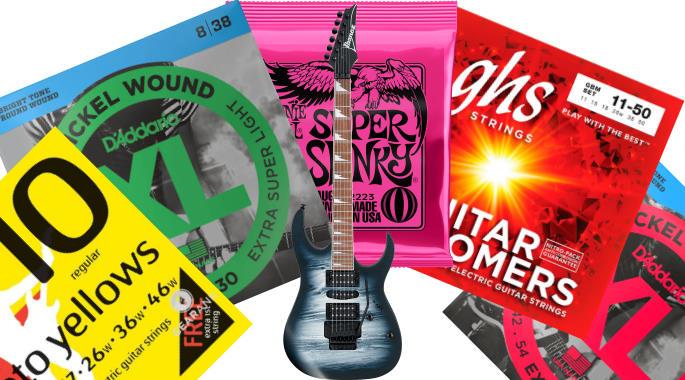
Author & Contributors
Alexander Briones
I have been writing about and researching music gear for many years, all while serving as a music director at my local church. I engage in guitar playing and singer-songwriter stints, in addition to mentoring young musicians and teaching guitar and bass.
Extra Super Light Gauge
D'Addario EXL130 Nickel Wound
Cons
- Not enough brightness for some
Pros
- Excellent play feel
- Keeps in tune well even when used with locked bridge setups
It's hard to talk about strings and not mention D'Addario, with their worldwide market presence and their legacy as one of the pioneers of winding machines.
Their continued popularity in all-things guitar strings is corroborated by the high ratings that strings like EXL130 receive, which in turn helped the company secure multiple slots in this guide.
The EXL 130 is an extra light gauge set, part of their popular nickel wound line.
With its thin gauge high E string at .008 and low E String at .038, this set is easy on the hands.
The D'Addario EXL130 Nickel Wound is a great feeling, extra super light set of strings. If you need the dexterity and clarity of thin nickel strings, this is a great affordable choice.
Specifications
- Gauge: Extra Super Light (008, .010, .015, .021, .030, .038)
- Core Material: High Carbon Steel Alloy
- Winding Material: Nickel-Plated Steel
- Winding Type: Round Wound
- Coated: No
| Website | Source | *Rating Value |
| Youtube | Nazereth666 | 90/100 |
Super Light Gauge
Ernie Ball 2223 Super Slinky Nickel Wound
Cons
- Lose their brilliance quickly
Pros
- Great feel
- Widely available
Throughout the many years of my electric guitar playing journey I have had the privilege (and sheer curiosity) to try all sorts of strings. But the Ernie Balls hold a special place of nostalgia for me because these were the first "proper" strings that I tried.
The Ernie Ball "Super Slinky" 2223 strings are the 9-42 gauge variant of their Slinky Nickel Wound series featuring a hex-shaped tin plated steel core wrapped with a nickel-plated steel wire providing a balanced tone, attempting a versatile voicing that's not too bright or dark.
They definitely have a unique feel to them and like an old perfume instantly transported me to a different time, the moment I first tried an electric guitar with a fresh set of quality strings.
They have a sound that I would describe as springy, there's a charming bounce to the feedback of the strings and the characteristic lightness for its gauge makes fretting chords a breeze.
One thing that hasn't changed throughout the years is the quickness with which this set runs out of brilliance and is possibly one the reasons I went string hopping in the first place. If you're thinking about maining these strings I would stock up on at least 3 sets for backup and replace them whenever there is a critical task at hand such as a gig or a recording session.
These are good, although I'm not pledging my undying fealty to this set. There is something to be said about these classic strings and they can be used as a jump-off point to find what strings will suit your needs and preferences.
Specifications
- Gauge: Super Light (.009, .011, .016, .024, .032, .042)
- Core Material: Tin Plated Hex Steel
- Winding Material: Nickel Plated Steel
- Winding Type: Round
- Coated: No
| Website | Source | *Rating Value |
| Gearank | Alden Acosta | 90/100 |
Light Gauge
D'Addario EXL110 Nickel Wound
Cons
- Trebly voicing can sound thin and drowned out in band settings
- Requires a bit of tweaking to tame the highs
- Loses some of its treble as it ages
Pros
- Bright tone that's great for R&B, pop and similar styles
- Tension is not that much higher than 9s
- Consistent quality fresh strings pack after pack
- Smooth playing feel
- Widely available
The EXL110 is a non-coated gauge 10 set, part of the company's long running XL Nickel line that was first introduced in 1974. It features hex shaped cores wrapped in nickel, which improves the structural integrity of strings, resulting in better tuning stability and longevity.
Since I've been using this set for a long time, it has become the standard set by which I compare everything else. And while I appreciate the difference in tone and feel that other strings provide, the EXL110 continues to hold its own in terms of quality, tone, and reliability.
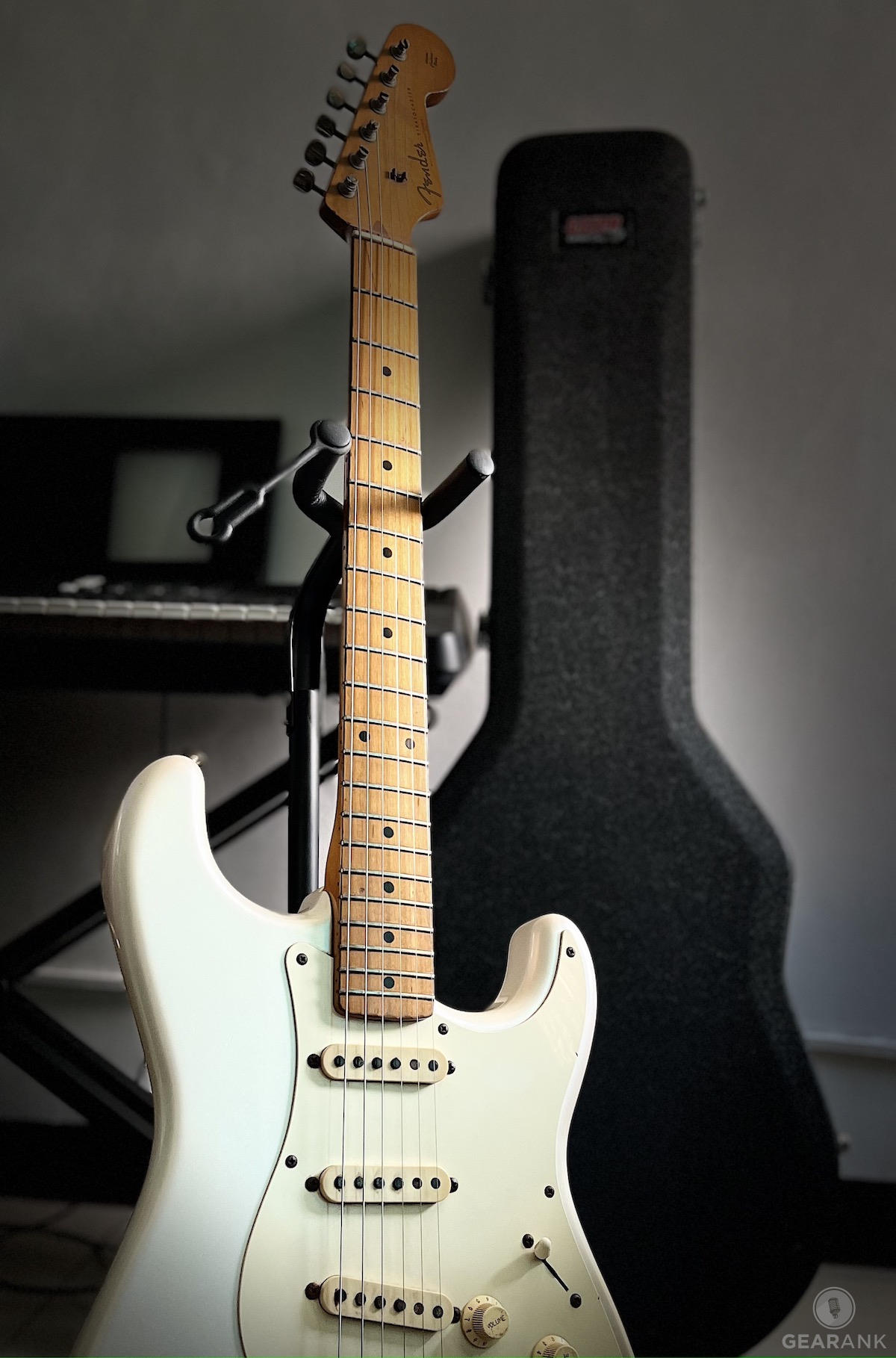
EXL110s on Alexander's Strat
"Bright Tone" is printed on the upper left portion of the packaging, and it correctly describes the EXL110's voicing. It has clear sparkly highs that work great with single-coil guitars, even the bass strings have some zing to them. This is the reason why I love using this on my Strat, especially when I'm playing pop, R&B and similar styles. On the flipside, while trebly strings sound good when playing alone, it can sound thin and be drowned out in band settings. And because I got so used to its bright voicing, it took me a while to realize this problem, and to appreciate other balanced and warmer voiced strings. Thankfully, excess treble can be remedied by tone and EQ adjustments.
The EXL110 has a light feel that makes it easy to play, and to me, this is its main advantage over my other string choices. My fretting hand hurts less with this, compared to other similarly spec'ed 10-46 gauge sets from other brands. Those who are used to 9s will find that riffs and chords will not be much of a problem, but they will feel the extra tension of its thicker gauge when bending. I also find that it has a smoother feel, which makes it easier to do slide, hammer-on and pull off techniques.
If you're looking for a widely available bright sounding 10 gauge set, or if you're looking to go beyond the usual 9s, then the D'Addario EXL110 is perfect for you.
Specifications
- Gauge: Light (.010, .013, .017, .026, .036, .046)
- Core Material: High Carbon Steel
- Winding Material: Nickel-Plated Steel
- Winding Type: Round
- Coated: No
| Website | Source | *Rating Value |
| Gearank | Alexander Briones | 95/100 |
Author's Pick
Here's a set of strings that Les Paul players will appreciate.
Rotosound R10 Roto Yellows
Cons
- May sound "old" for those used to trebly strings
- Not as long lasting as coated strings
Pros
- Comes with a Free extra 1st string
- Warmer Midrange focused tone
- Playability is not too far off from 9s
- Dulling of high frequencies is not as dramatic as it ages
Before the convenience of online shopping, my choice of string brands were limited to what's available at local stores, but this led me to discover the Rotosound R10. I didn't really seek it out, rather I ended up getting it because there were no other gauge 10 available at that time. I wasn't sure what to expect, but I ended up liking it, and up to now, it still is one of my go-to string sets, especially for my Gibson Les Paul Studio.
What enamored me to the Roto Yellow is its aggressive mid-range, which is a contrast to the trebly sounding strings that I'm used to. The thicker wound strings sound fuller to my ears, great for playing my favorite riffs and chord changes. It also rounds-off some of the excess high-frequencies of bridge pickups, resulting in a subtly warmer yet still ballsy tone, that works great for blues, rock and similar styles. The downside to its warmer tone is that some may find it sounding "dead" or "old", especially those who are used to bright sounding sets. Note that I still use bright strings, especially when I'm going for clarity and bell-like cleans, but I go for the R10 when I need to cut through a mix.
I didn't notice any playing feel improvement compared to the other 10s that I use, but I don't have any complaints either. This set plays much like any of the "standard" strings that are available in the market, which is good for me because I want my guitars to have consistent playing feel, regardless of what brand of strings I use. The feel of this set is not too far off from the more common 9s, but there is noticeable increase in tension when I apply left-hand techniques like vibrato, bending and pre-bends.
In my experience, this set retains its fresh playing feel and tone for over 2-weeks, sometimes longer if I diligently wipe the strings after playing, and put my guitar back in its case when not in use. Note that it doesn't come with "coating" that extends string life, but in my experience, it still lasts quite long for a standard set. And since its not a trebly set to begin with, the dulling of its high frequencies is not as dramatic as it ages.
In terms of tuning stability, I don't see the R10 as being better or worse than others. After a break-in period, it reliably stays in tune as I play on stage or for practice, as long as I don't play too aggressively. It's part of my routine to tune my guitars every time I take them out of their case, so tuning stability over long periods is not much of an issue to me.
Instead of the usual paper and plastic packaging, the R10 set comes in a streamlined package with just one sealed foil pack carrying all the strings. This does away with individual packets for each string, reducing waste and packaging cost, while retaining string freshness upon opening. Its single foil package never gave me problems, probably because it is not as prone to wear and tear as paper.
More importantly, the savings they get from their simplified packaging are given back to consumers via a free extra 1st string. This freebie is another BIG reason why I keep going back to this set, saving me the need to buy another set just because the 1st string broke.
I recommend this set to anyone who is into blues, rock and similar styles. The included extra 1st string ups its value by a lot, and more importantly, gives me one less thing to worry about.
Specifications
- Gauges: .010, .013, .017, .026, .036, .046
- Core Material: Steel
- Winding Material: Nickel
- Winding Type: Round Wound
- Coated: No
| Website | Source | *Rating Value |
| Gearank | Alexander Briones | 96/100 |
| Equipboard | zisis | 100/100 |
Medium Gauge
GHS GBM Guitar Boomers
Cons
- D and A strings are the same gauge as the GHS 10-46 set making some prefer their "True Medium" set
- Despite their durability, they lose their brilliance quite quickly
Pros
- Pleasing and versitile tone that lends itself well to amp EQ and other effects
- Hard to break for uncoated strings
- Relatively affordable
Stevie Ray Vaughn, Eric Johnson, Carlos Santana, Neal Schon, Tom Morello are just a few of the many notable artists who use GHS Strings. And as expected their popularity with the pros has spilled over to the masses, especially when it comes to medium gauge strings.
The GHS GBM set follows conventional string designs that utilize nickel-plated steel windings and steel core.
But being a medium gauge set instantly sets it apart from what most players use. The extra thickness of the 11 gauge strings allow for increased string tension for gritty tones that you simply cannot get from the usual thin sets.
Each GHS set comes in "Nitro-Packs" which prevents corrosion from affecting the strings prior to opening. This packaging has a nifty transparent side so you can check if all strings are intact without having to unseal. The plain strings are thicker, so they are harder to bend, but they sound fuller compared to lighter gauge sets.
The GHS GBM strings represent the highest rated medium gauge strings and have a unique sound and vibe to them compared to competitors like Ernie Ball and D'addario. If you want to try their house sound and find out why they are the dark horse of the famous string manufacturers, give these strings a shot.
Specifications
- Gauge: Medium (.011, .015, .018, .026w, .036w, .050w)
- Core Material: Steel
- Winding Material: Nickel-Plated Steel
- Winding Type: Round Wound
- Coated: No
| Website | Source | *Rating Value |
| The Gear Page | Stratburst70 | 90/100 |
Heavy Gauge
D'Addario EXL145 Nickel Wound
Cons
- Requires constant wiping down to prevent rust and dullness
- Not enough tension and sloppy for tuning down to standard B
Pros
- Beefy and hard to break
- Stay in tune very well with little chance of going sharp from hard attack
- Excellent for drop D and other lower tunings
D'Addario's EXL string design works well in just about any gauge, as evidenced by the EXL145 rating highly in the heavy gauge sector.
This heavy set follows their time tested formula of precisely winding nickel-plated steel on a hexagon shape high carbon steel core.
The bright tonality of nickel + steel balances the warm tone expected from thick gauge strings.
One drawback is that although heavy gauge strings are generally very good for lower tuning, the EXL145 set feels sloppy when tuning down to standard B.
Sometimes you need thick strings for metal and similar genres, sometimes you just want the warmth and fullness they provide. In any case, the EXL145 from D'Addario is a highly rated set of heavy gauge strings.
Specifications
- Gauge: Heavy (.012, .016, .020, .032, .042, .054)
- Core Material: Steel
- Winding Material: Nickel-plated Steel
- Winding Type: Round
- Coated: No
Things to Consider When Buying Electric Guitar Strings
-
Strings are grouped together based on their guitar string gauges: Heavy for thick gauge sets, Medium for the in-betweens, while the thin ones fall under the many variants of Light gauge. Generally speaking, thinner strings result in brighter tone, while thicker strings with their increased tension results in more mids, low-end, and sustain. Super Light and Light gauge are the current market favorites because they are easier on the hands. Experienced guitarists tend to move up their gauge preference, depending on their playing style and the type of music they are playing.
-
A sure fire method is to go for the same string gauge that was originally installed on your guitar. This way your guitar will feel the same, with no increase or decrease in tension that might affect your guitar's hardware, setup and tone. Most people, especially beginners, go for Light and Super/Extra Light gauge strings because of how easy they are on the hands. Some experienced guitarists switch to Medium or even Heavy gauge strings for fuller tone with more sustain. Others switch because they play slide or in a style that works better with thicker strings. Note that increased tension may adversely affect the setup of your guitar, so best consult with the manufacturer, or a luthier, before changing to a much thicker gauge.
-
Standard String Gauges from High E to Low E String E B G D A E Extra Super Light .008 .010 .015 .021 .030 .038 Super Light .009 .011 .016 .024 .032 .042 Light .010 .013 .017 .026 .036 .046 Medium .011 .015 .018 .026 .036 .050 Heavy .012 .016 .020 .032 .042 .054 -
Steel is an alloy that combines iron and carbon, and it is the main core material used in electric guitar strings. The reason for this is that it works well with magnetic pickups which are used on electric guitars, and this is also why nylon strings will not work with electric guitars. Some manufacturers develop their own steel formula, like high-carbon steel, the aim of which is to improve string durability, tuning and sound.
-
The three thickest strings of electric guitars (4th, 5th and 6th) often come with Nickel-plated steel winding, and these string sets tend to sound bright and clear. This bright and snappy sound has become the standard tone expected of freshly installed strings. Speaking of fresh, the downside to nickel-plated steel windings is that over time, the strings lose their trebly tone.
Some manufacturers offer strings with "Pure" Nickel winding, which is a throwback to how strings were made back in the 1950s. These strings have a slightly smoother warm sound that stays consistent even after long use. Another popular type of winding uses Cobalt + Iron plating, this is known for a more rounded mid-range focused tone, and a slicker playing feel.
-
To improve the longevity of strings, some manufacturers apply specialized thin layer of polymer "coating" on the strings. The coating has to be thick enough to prevent dirt, grime and other causes of corrosion from attaching themselves on the strings, but it also has to be thin enough to not hamper string response. Coated strings are expected to stay fresh sounding longer than conventional strings, and they also last longer. The downside is that the coated strings are noticeably not as snappy and lively sounding as freshly opened regular sets. Still, even the non-coated strings will lose their trebly tone in time, so it evens out in the long term. Coated strings are ideal for those who don't play often but want good sounding strings every time they decide to open their guitar case.
-
The timing of changing your strings differ from person to person, and will mostly depend on how much you play your guitar. Those who pickup their instrument regularly and want snappy sounding strings every time they play will be changing their strings more often than those who seldomly pick up their guitar. Rust and grime on the strings are obvious signs that your strings have reached the end of their lifespan. Less obvious signs to watch out for include intonation issues, and dulling of tone. Interestingly, there are some musicians who prefer the warmer dull tone of old strings... so there really is no hard and fast rule when it comes to the timing of string changes. Finally, many guitarists simply wait for string breakage to change their set, even then, some would just change the one string that broke. This is not advisable because of the tone and feel difference between the new and old strings.
-
The process of changing strings on electric guitars differ wildly based on the tuners and bridge setup of your guitar. The process will be straightforward for those with vintage style tuners and hard-tail bridge. Those with locking nuts, tremolo / Bigsby bridges, and floating tremolos will require a bit more effort. It is best to consult the instructions specific to the hardware that's installed on your guitar. It also helps to have the right Guitar Accessories and Guitar Parts for the job.
Electric Guitar String Gauges Explained
How to Choose a String Gauge
Table of Gauges
Core Material
Winding Material
String Coating
When to Change Guitar Strings
How to Change Guitar Strings
Best Electric Guitar String Selection Methodology
The first Edition was published in September 2021.
To keep this guide focused, we decided on a simple criteria of only including standard gauge 6-string electric guitar sets that come with one ball end, and to make this guide useful and relevant, we only feature those that are available from major online American retailers. With so many string sets available, we narrowed down our scope to the ones with the highest ratings. With these criteria in place, we were able to come up with a short list of 46 highly rated sets, which entailed the gathering and analysis of a large amount of data, over 183,800 review and rating sources. All these data were then fed to the Gearank algorithm to produce a rating score out of 100 for each set on our short-list (see them in the Music Gear Database). Finally, we handpicked our favorites from among the highest rated options to recommend in each of the featured gauges in this guide: Extra Super Light, Super Light, Light, Medium and Heavy, along with an Author's Pick for Les Paul players. For this edition, we narrowed the list down further to just one top pick per category. For more information about our methods see How Gearank Works.
About the Author and Contributors
Here are the key people and sources involved in this guide's production - click on linked names for information about their music industry backgrounds.
Lead Author & Researcher
Alexander Briones
I have been writing about and researching music gear for many years, all while serving as a music director at my local church. I engage in guitar playing and singer-songwriter stints, in addition to mentoring young musicians and teaching guitar and bass.
I’ve been using D’Addario strings for a long time now, partly because they are available everywhere, but mostly because they have been consistently good in terms of tone, feel and longevity. Rotosound R10 is a more recent favorite, because of how it suits my Les Paul guitar.
Contributors
Alden Acosta: Wrote the Ernie Ball 2223 Review.
Jason Horton: Editing and illustrating.
Media
Main/Top Image: by Gearank.com using pictures of the Rotosound R10, D'Addario EXL130, Ernie Ball 2223, GHS GBM, D'Addario EXL145 and Ibanez RG470DX.
The individual product images that do not contain a Gearank logo were sourced from websites, promotional materials or supporting documentation provided by their respective manufacturers. The other photographs were taken by Gearank team members and are subject to copyright.



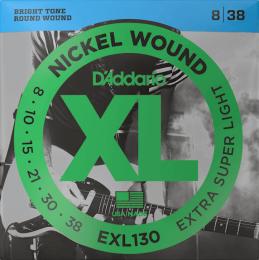
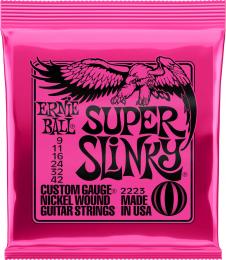

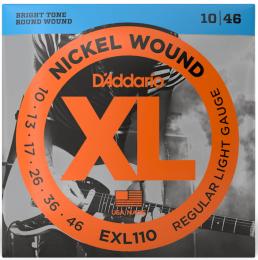
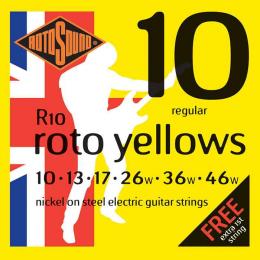

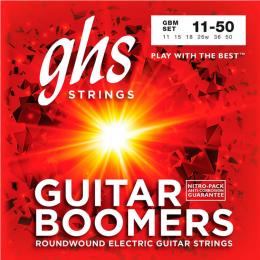
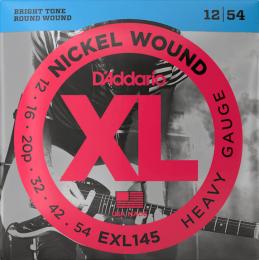




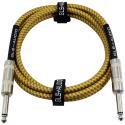
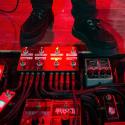
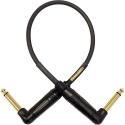


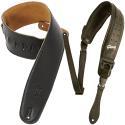
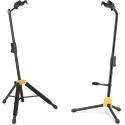
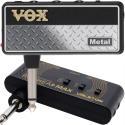
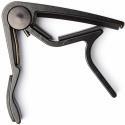





Comments
The following sets of strings
Submitted by Jason Horton on
The following sets of strings came off the recommended list above when we published the December 2022 Edition:
Publication of our June 2022
Submitted by Jason Horton on
Publication of our June 2022 Edition resulted in the following set of strings coming off the recommended list above: Ernie Ball 2253 Super Slinky Classic Rock N Roll.
Well, nobody else commented.
Submitted by KGIII (not verified) on
Well, nobody else commented. So, I will.
Thanks for the effort that went into this article. Your time, and results, are appreciated. Much of it is pretty basic, but there was enough detail to ensure I read to the very end.
Thank you for your feedback -
Submitted by Jason Horton on
Thank you for your feedback - do you have any suggestions for how you think we could improve this guide?
Hello, hope this guide is
Submitted by Alexander Briones on
Hello, hope this guide is helpful. If you have any questions about guitar strings, post them here and I'll do my best to help. Or if you want others to learn about your favorite electric guitar string set then share your story in this comments section.